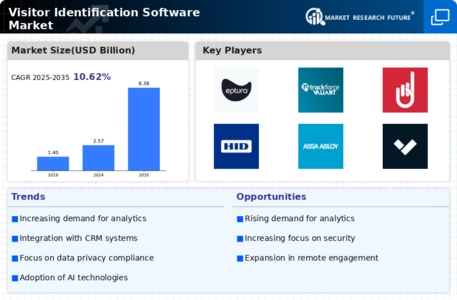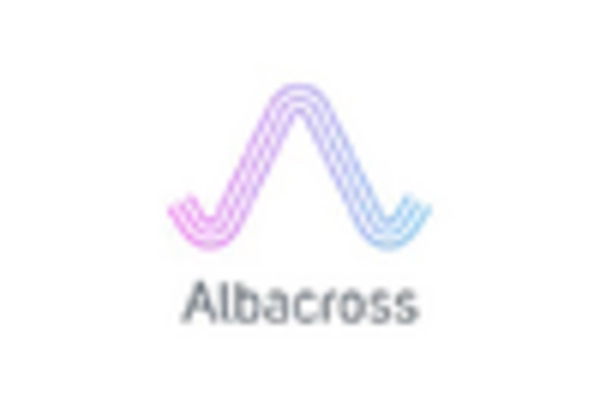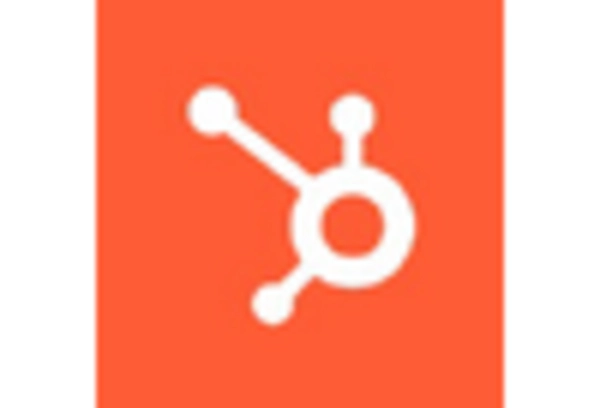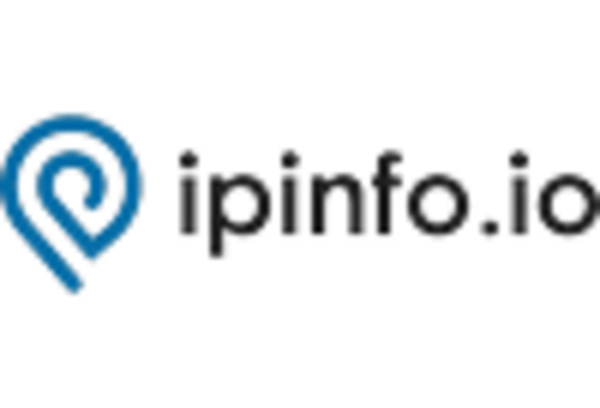Increased Focus on Personalization
The Visitor Identification Software Market is witnessing an increased focus on personalization as businesses strive to create tailored experiences for their customers. By leveraging visitor identification software, organizations can collect data that informs personalized marketing efforts, leading to higher engagement rates. This trend is supported by research indicating that personalized marketing can lead to a 20% increase in sales. As companies aim to differentiate themselves in a competitive landscape, the ability to understand and cater to individual visitor preferences becomes a critical factor for success, thereby driving the demand for visitor identification solutions.
Rise in E-commerce and Online Businesses
The Visitor Identification Software Market is significantly influenced by the rise in e-commerce and online businesses. As more companies transition to digital platforms, the need for effective visitor identification becomes paramount. This software allows businesses to track and analyze visitor interactions, which is crucial for optimizing online sales funnels. Recent data indicates that e-commerce sales have seen a steady increase, with projections suggesting that they will account for over 20% of total retail sales in the coming years. Consequently, the demand for visitor identification solutions is likely to grow as businesses seek to enhance their online presence and conversion rates.
Advancements in Technology and AI Integration
The Visitor Identification Software Market is benefiting from advancements in technology, particularly the integration of artificial intelligence (AI) and machine learning. These technologies enhance the capabilities of visitor identification software, allowing for more accurate data analysis and predictive insights. As AI continues to evolve, it is expected that visitor identification solutions will become more sophisticated, enabling businesses to anticipate visitor needs and behaviors. This technological evolution is likely to propel market growth, as organizations seek to leverage AI-driven insights to improve customer experiences and operational efficiency.
Growing Demand for Enhanced Customer Insights
The Visitor Identification Software Market is experiencing a notable surge in demand for enhanced customer insights. Businesses are increasingly recognizing the value of understanding visitor behavior and preferences. This software enables organizations to gather and analyze data on website visitors, leading to improved marketing strategies and customer engagement. According to recent estimates, the market for visitor identification solutions is projected to grow at a compound annual growth rate of approximately 15% over the next five years. This growth is driven by the need for businesses to tailor their offerings based on visitor data, thereby enhancing customer satisfaction and loyalty.
Regulatory Compliance and Data Security Concerns
The Visitor Identification Software Market is increasingly shaped by regulatory compliance and data security concerns. With the implementation of stringent data protection regulations, businesses are compelled to adopt visitor identification solutions that ensure compliance while safeguarding customer information. This necessity is underscored by the fact that non-compliance can result in substantial fines and reputational damage. As organizations prioritize data security, the demand for visitor identification software that adheres to regulatory standards is expected to rise, thereby driving market growth and innovation in this sector.


















Leave a Comment